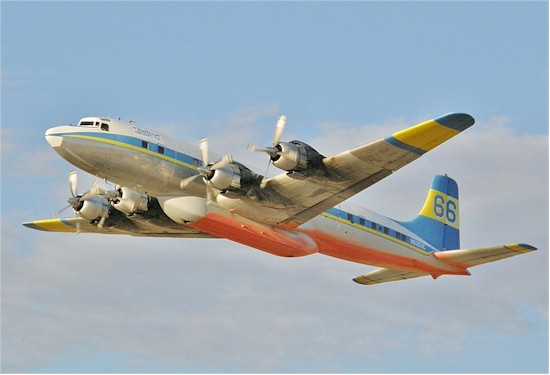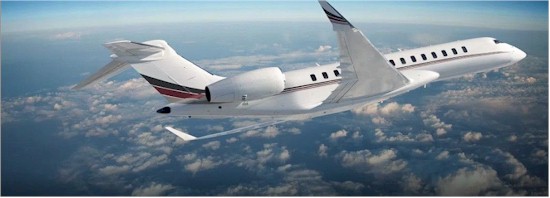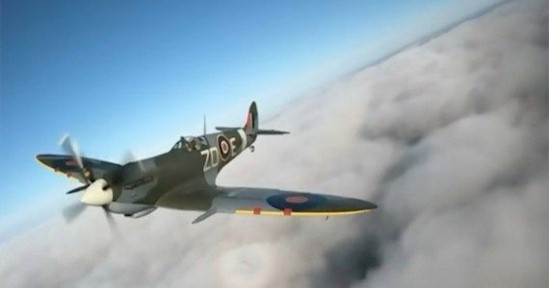|
|
|
Answer to 'Name the Aircraft' in 'Odds & Ends'. The Douglas DC-7 is an American transport aircraft built by the Douglas Aircraft Company from 1953 to 1958. A derivative of the DC-6, it was the last major piston engine-powered transport made by Douglas, being developed shortly after the earliest jet airliner—the de Havilland Comet—entered service. No DC-7's are in operation today. A small number survive on display. More info at en.wikipedia.org/wiki/Douglas_DC-7 |
 |
|
Butler Aircraft Services DC-7 Tanker 66 takes off from Fox Field, Lancaster, California, during the October 2007 Southern California Wildfires. Photo by Akradecki, October 29, 2007 |
|
Bombardier Names Launch Customer For Global 8000 Private jet company NetJets will be the fleet launch customer for Bombardier’s new Global 8000 business jet, the company announced this week. Bombardier reported that NetJets has placed a $312 million firm order for four Global 8000s along with converting earlier orders for eight aircraft. Following delivery of its first Global 8000, NetJets is also planning to convert its current fleet of Global 7500s resulting in a Global 8000 fleet of 24 aircraft. |
 |
|
Fly-by-wire for beginners by Enderson Rafael at: What makes a fly-by-wire airplane fly-by-wire? The term is broadly used nowadays, but not often explained. Since we have many GA colleagues here, and fly-by-wire is a concept more common to the military and airline world, it might be interesting to share some pilot perspective about its way of working and our way of flying it. Since I spent the last couple months transitioning between the only two Boeing fly-by-wire models, I thought it would be worth sharing it with you. Well, conventional airplanes have control surfaces—ailerons, elevators, spoilers, rudder—that are controlled by cables, just like a bicycle gear or brakes. You pull a yoke or stick and the cable, directly connected to the control surface, moves it. Even huge airplanes, like the Boeing 747, work that way, although obviously assisted by hydraulic actuators, since the commands are too heavy for the pilots to move by muscle force alone. Fly-by-wire is somewhat different: the control surfaces are not directly connected to the control column, nor the rudder pedals; instead they are linked by electrical wires, through which pilot inputs, once translated into electronic signals, travel to actuators at the control surface.
|
|
At an airfield on the outskirts of London, England, a precious Spitfire fighter that once flew with the Royal Canadian Air Force is taking to the skies once again. It's one of the world's most iconic aircraft and it's being kept airborne thanks to the efforts of the Biggin Hill Heritage Hangar, the largest Spitfire restoration facility on the planet. This particular model even made an appearance in the 1969 film, "Battle of Britain." But today, only around 70 Spitfires can fly, and the value of the planes continues to soar. Back in January, 2023, one Spitfire, that appeared in the film, was listed at an auction for a sky-high £4.5 million, or C$7.5 million. Source: www.ctvnews.ca |
 |

